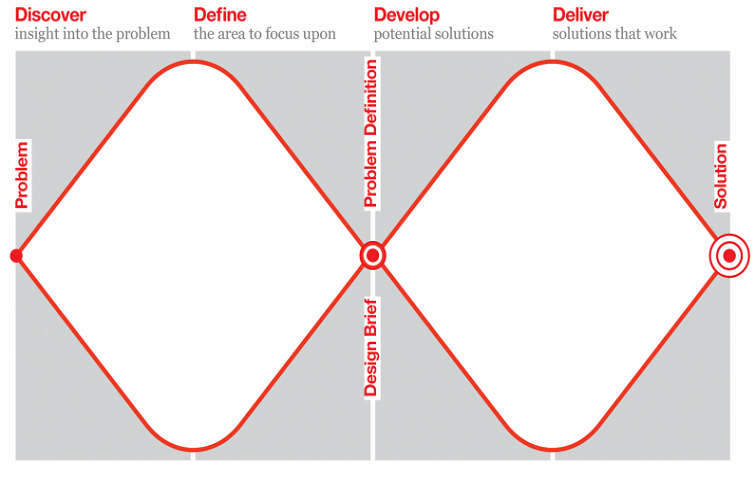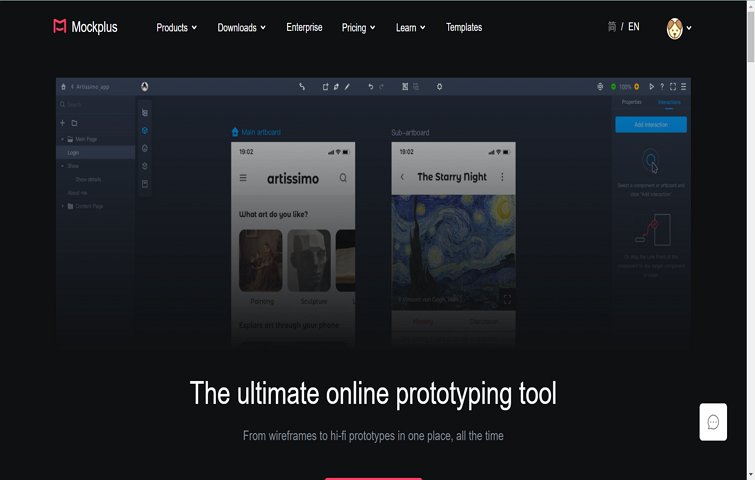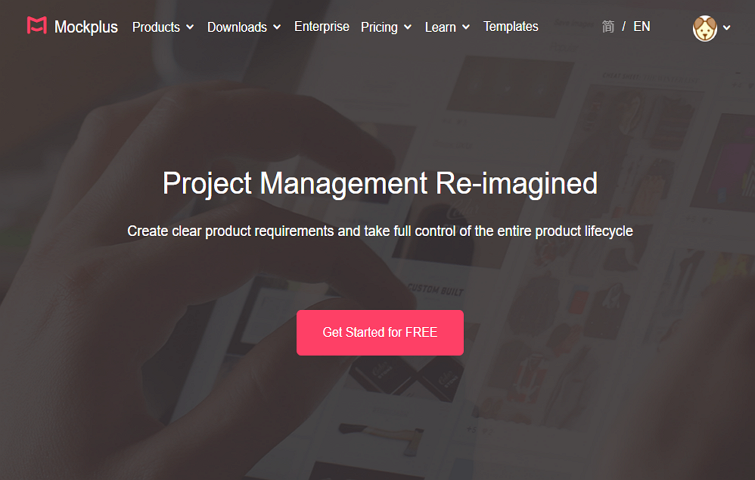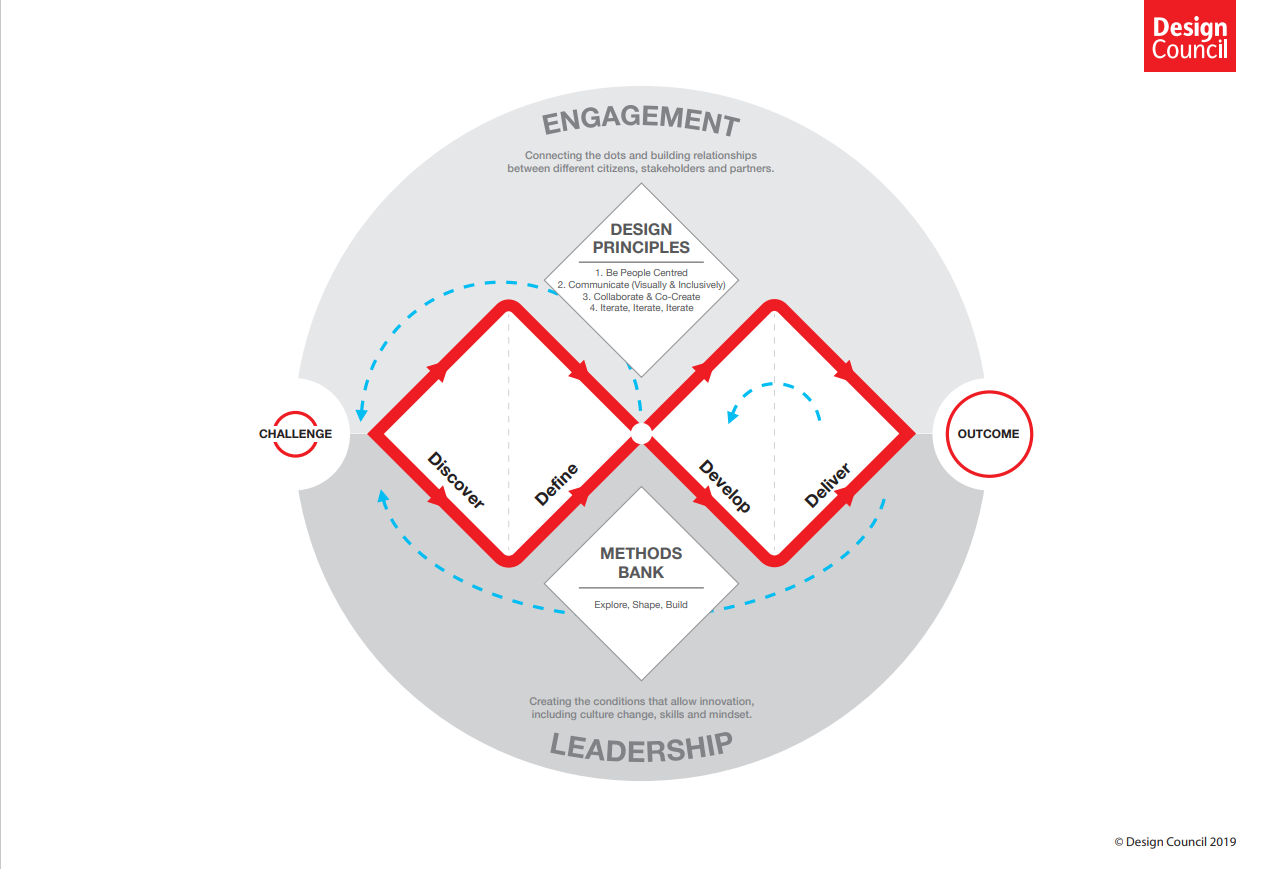In this article, we are going to introduce quite a famous design term: double diamond design. It will be helpful in your next design work or other projects after understanding the term. Maybe, in your mind, you are wondering what the meaning of the diamond is? And what has something to do with design? Keep reading this article. The answer will be presented step by step.
Generally speaking, the so-called double diamond design is a process or method that designers and non-designers use to create solutions for complicated problems. At first, it was the British Design Council to study how transnational companies like Microsoft manage design work. In this study, it was found that they all have some of the same characteristics in these large companies. The double diamond design is summarized into four processes: discovery, definition, development and delivery. When officials explain the characteristics of these four processes - divergent thinking and convergent thinking - they draw a picture whose shape is like two diamonds, and thus it is called Double Diamond design. Among them, the process of discovery and development needs divergent thinking, while the process of definition and delivery needs focused thinking.

The double diamond design process has been applied to all walks of life. In order to present the meaning of each step of the double diamond design and what needs to be done, I will explain it in combination with the design industry.
The main objective at this stage is to gather information, which generally includes user usage information, competitive product research information and market research information. At this stage, the following things usually need to be done:
Gather as much information as possible
As a designer, the main thing for you in the first stage is to learn as much information as possible, you can learn about it through the company, or you can collect information yourself. Remember, don't miss any data related to your design. Because only with enough information can you ask questions, make assumptions, and identify problems.
Create a space
The management of data information is quite important. We recommend that you collect as much data as possible and put all the data in one place. The advantage of this is that it is easy for you and your team to grasp all the information.
Analyze and organize data
Disorganized data is often dizzying, so analyzing and organizing it is especially important. For example, if you are collecting user feedback on a product problem, you can put similar problems under one category, and when all the information is sorted out, you can understand clearly which type of problem has the most feedback from users.
Brainstorm together
The management of the company should let all project stakeholders be involved in the project and give them enough time to brainstorm and record all the various early ideas. At first a seemingly unrealistic idea has the potential to make a brand famous.

Stand in your users' shoes
Become your user and try to use your company's products from the user's point of view, you may have a different experience than when you normally work on the product. The British Design Council found something very interesting, 11 of the transnational corporations are user-centered in their designs, which shows that you need to focus on the needs and behaviors of the users.
This stage uses convergent thinking as a filter, mainly to rethink, funnel, or discard some ideas from stage one. At this stage, the following things usually need to be done.
Focus on main problems
At the Define stage, a combination of the ideas or directions identified during the discovery stage is analyzed and synthesized into a brief with actionable tasks related to a new and existing product or service development. After the data analysis in Phase one, your team can already see all the information visually, and you should be able to easily determine where the main problem is.
After that, you need to rank all the problems by importance. Of course, the most important issues should not only be prioritized but also ensure the user experience. If you're a project manager, it's best for everyone involved in the project to understand what the main problem is. If you are a designer, you should know more.
Evaluate the resources you have
Sometimes, unexpected ideas are stunning, as long as they are possible to create. Therefore, you need to take into account the company's economic situation, the level of investment in this project, the project roadmap, the characteristics of some competing products released in the market recently, and even some other social factors, such as environmental issues. Then, the designer must equally keep in mind what is feasible within the company’s technological or production capabilities.
Corporate sign-off
If only the people involved in the project are the design team, then when everything is ready, a project application needs to be submitted.
After the company's managements fully consider the feasibility and expected effects of the project, they will decide whether to start the project. Research has found that the ability to submit a persuasive design project application is very important. Yahoo, for example, says that its project members, including designers, must be able to explain how their proposals will ‘move the needle’ and produce a dramatic improvement in revenue.
After following the in-depth study of the design process in the eleven transnational companies, the British Design Council found that Microsoft refer to this process as Implement, while Virgin Atlantic Airways call it Design. Simply put, just do it!
Find potential solutions
For a design team, the completion of the first two stages means that the design can now begin. But to design a satisfactory product, it is not the first time that everyone is satisfied, which means that UX designers need to draw many wireframes to present the initial shape of the product. Only after the prototype of the product is determined, the UI design of the product can be started, and finally delivered to the development team.

Do lots of multi-disciplinary work
The four processes of product requirements research, design, development, and testing seem each to be an independent step. In fact, each step may require the participation of people from other departments. For example, when product managers explain product requirements, developers usually need to be present to clarify the feasibility of the demand. During this entire process, a multi-disciplinary team including product and brand managers from the marketing department, designers from the Design department, and developers or programmers from the R&D department will work together to ensure the intended result is achievable for all departments.
Design Project management
Design project management allows internal leaders to track progress on the design project and see different phases and iterations of sketches, prototypes, and other design work on the product or service concept. Companies like Starbucks usually choose certain project management tools to centrally manage their design resources, project progress, and so forth.

Test products or services
The final stage of development is usually testing, the main purpose of which is to test the performance of the product. Before the testing performance is in use, each company usually has its own testing principles or standards. For example, Xerox tests its products with Six Sigma principles in mind. Typically, design testing principles are based on product specific user usage to ensure that the product does not cause unexpected problems.
During the in-depth study of the design process in eleven famous companies, the council found that Virgin Atlantic Airways have named this phase Implementation, Microsoft calls it Maintain, and Starbucks describes it as the Production District.
Final test and release
The final process of the double diamond design is to confirm whether the original purpose of the project has been completed, and usually, some other tests on the product, such as compatibility testing, are required. If everything is ok, you can release it. Last but not least, remember to communicate more with the marketing and brand departments to let your users find your brand and products.
Create a feedback system
Getting a product to market doesn't mean it's over, to some extent, it's just the beginning. After release, you need to let your users be able to give you feedback so that you can iterate your product or service continuously. This helps keep your brand gradually improve as it is supported by more and more people.

The concept of the double diamond design was released in 2004, nearly 18 years ago. Although this famous concept has become more and more popular in the design industry and non-design industry, it has gradually exposed some deficiencies and problems.
No model is perfect, not even the double diamond design model. This model seems to be telling the designer what to do at each step, and after that step is complete, the next step can start. In fact, the real design process is quite complicated. A model just tells the designer not to forget these steps, it does not mean that these processes are correct. On the contrary, if an experienced designer follows these processes, it will confine the designer and obliterate his/her creativity. But use these as your own framework to help steer your own creative roadmap.
Based on the above truth, the design council updated this model in 2019, calling it a Framework for innovation, and its core is still the double diamond design model. However, this model adds the following sections to make the whole process more complex and more realistic:
1. Be people-centered
That means you need to understand the people who use your product/service, their needs and their desires.
2. Communicate(visually and inclusively)
Don't refuse to communicate, including with your users and colleagues, what is your source of inspiration.
3. Collaborate and co-create
By working together, you can work much faster and create a better product than by working on your own.
4. Iterate, iterate and iterate
It is impossible to meet the growing needs of users without product iteration.
The council has structured a series of methods in three areas to help designers and non-designers use the design process to explore, shape or build:
Explore: challenges, needs and opportunities
Shape: prototypes, insights and visions
Build: ideas, plans and expertise
Collaborating with other organizations has often become part of how people create solutions. Therefore, the design council proposed the concept called a culture of success and believes that this kind of organizational collaboration between people is very important. There are two very important points in this concept, leadership and engagement. Leadership is that people need to encourage innovation, improve skills and capability, and provide permission for experimentation to find the best outcome. Engagement is needed with people who are delivering the ideas and receiving them, but also with other partners who might have other ideas.
If you read this article carefully, I believe you will have a very clear understanding of the double diamond design model. As a framework for creating solutions, the double diamond design model can be used not only in the design industry but also in a variety of other industries. However, please don't rely too much on the double diamond design model to solve problems. Sometimes, it may make your design process more complicated, understand when to use it, only in those more complicated solutions does a double diamond design framework really come into its own.
 Mockplus RP
Mockplus RP
A free prototyping tool to create wireframes or interactive prototypes in minutes.
 Mockplus DT
Mockplus DT
A free UI design tool to design, animate, collaborate and handoff right in the browser.
